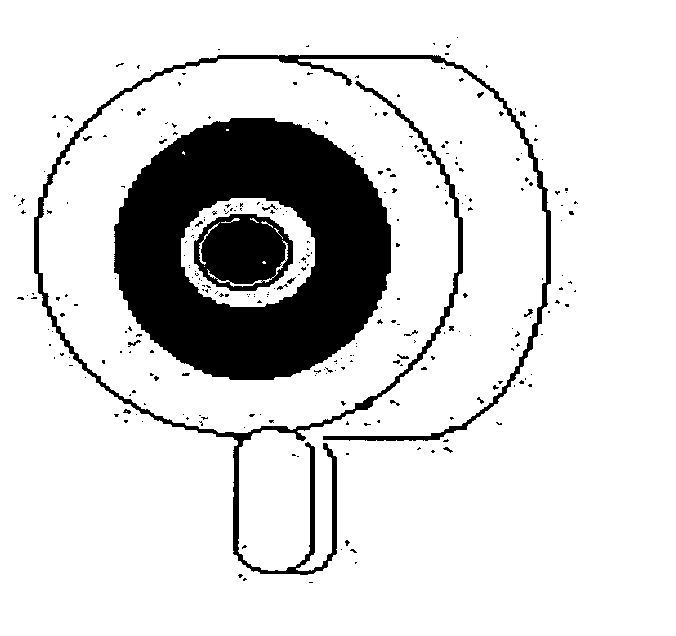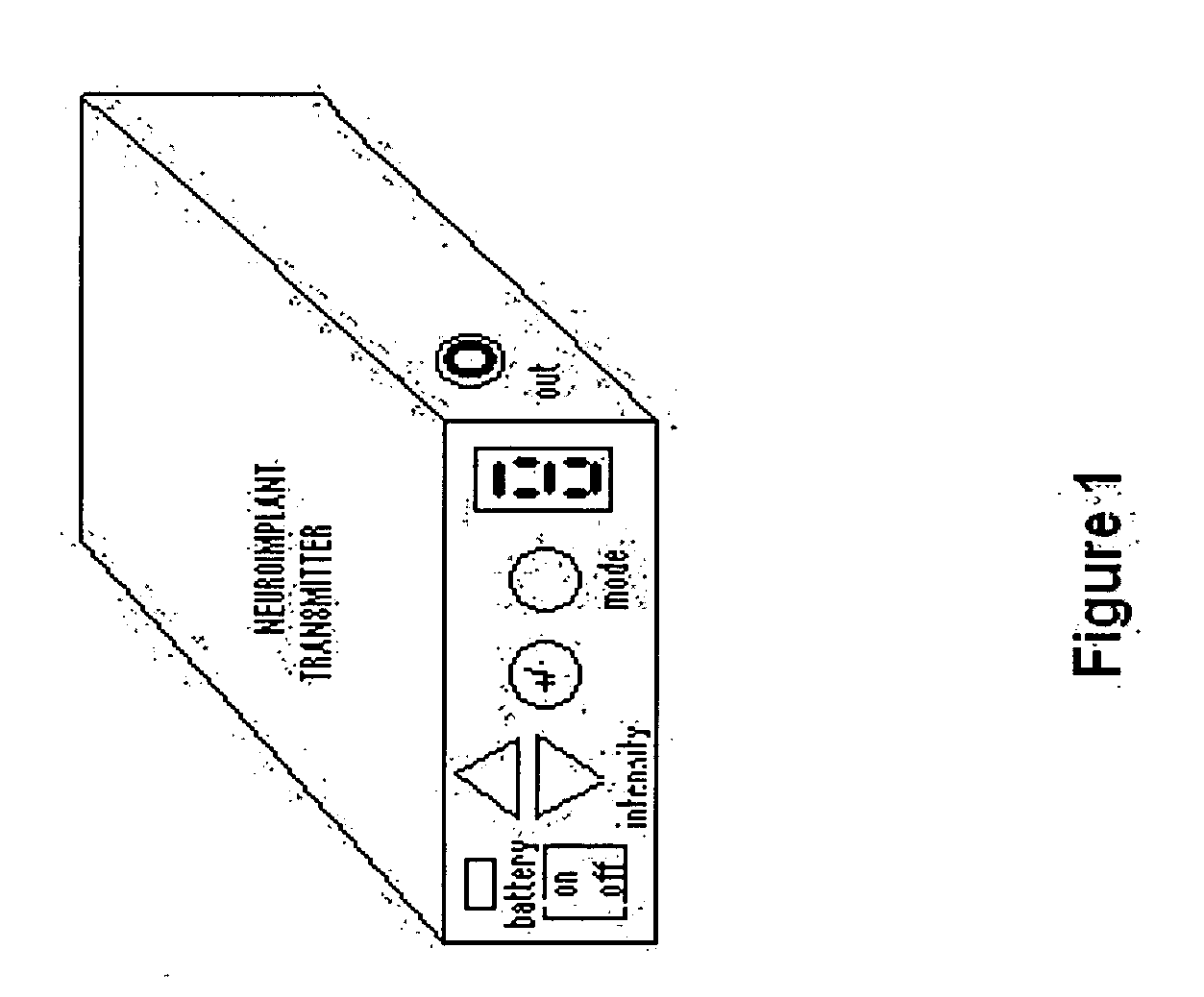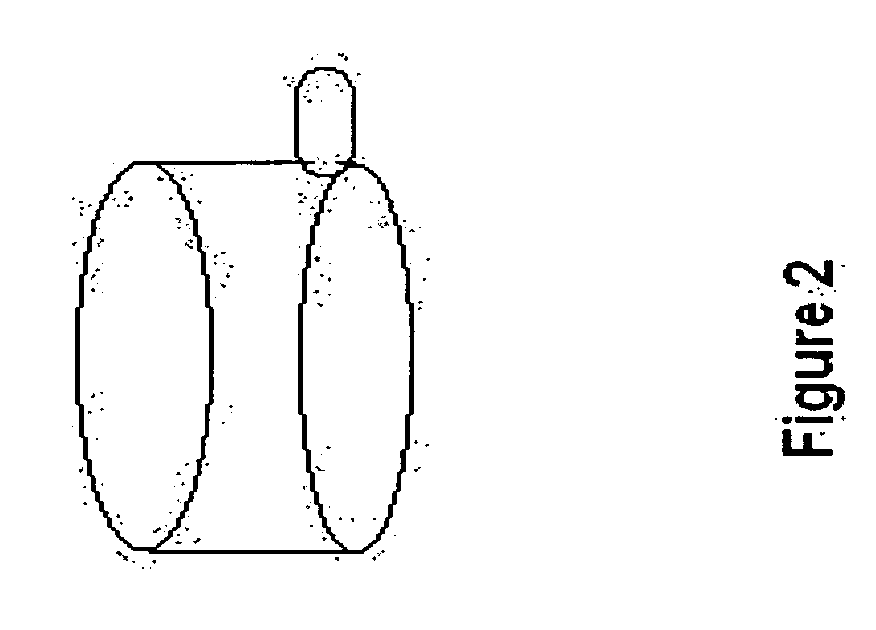[0010] The system mainly consists of four elements: two coils, one passive coil and one active coil, an electrode and a
transmitter. The passive coil and electrode are internal components implanted in the body; the active coil and
transmitter are external. The passive coil is connected to the electrode via insulated thin wires. The active coil is then placed on the skin overlying the implanted passive coil. Therapeutic signals produced by the transmitter are linked to the active coil by means of a
flexible cable, and are transmitted through the coils by
inductive coupling across the skin of the patient. Each coil is housed in a ferrite pot core that enhances inductive
coupling, and minimizes the size of coils thus facilitating the construction of a passive coils array to use multi-contact electrodes for effectively selecting the target neurons.
[0011] The main goal of the present invention is that the implanted part of the system is completely passive, having only a coil housed in a ferrite pot core, thus eliminating the risk of additional
surgery due to electronic breakdown or battery replacement.
[0017] Housing each of the external (2) and internal coils (3) in a ferrite pot core [(4),(52),(65)] enhances inductive
coupling and miniaturisation of the system. The external active coil [(2),(4),(52),(65)] is bigger in size (29 mm in
diameter, 9 mm in height) to keep the
coupling efficiency against lateral movements [(48),(49)] over the implanted passive coil (3) (FIGS. 3, 13 and 14). The internal coil [(3),(80),(88)] is small enough in size (14.4 mm in
diameter, 7.5 mm in height) (FIGS. 2 and 12); two or three of them can be used together to form a passive coils array to enable the use of multi-contact electrodes (FIGS. 21, 24 and 27). The only thing the
patient need to do is to move the single active coil (2) over the passive coils array [(83),(84)] to select the most effective channel of the multi-
contact electrode for switching of electrical stimulation between a number of sites, and thereby combat some of the difficulties of placement, targeting and
accommodation (FIG. 1).
[0019] The transmitter circuit of the present system (FIG. 5) has less number of electronic components (12),(13),(14),(15),(16),(17),(18),(19),(20),(21),(22),(23),(24),(25),(26),(27),(28),(29), (30),(31),(32),(33),(34),(35),(36),(37),(38),(39),(40),(41),(42)] than those of even common portable
transcutaneous electrical nerve stimulator (TENS) devices. It is, therefore, a cheaper and more reliable device. On the other hand, it is a versatile system providing all form of electro-therapeutic signals including conventional stimulation (in this mode; continuous pulses are repeated at a
constant frequency between 30 Hz and 100 Hz), the burst (in this mode; 80 ms long trains of pulses with an internal frequency of 80 Hz are repeated 1.3 times a second, each
train consisting of 7 pulses) and frequency modulated stimulation patterns (in this mode; fast pulses (110 Hz) are slowed down (55 Hz) for a short period (90 ms) 1.3 times a second, and then they get faster again), that are known to be more effective in some clinical conditions, with externally easy
programming (FIGS. 8, 9, 10 and 11).
[0020] The
signal transmitted by the existing RF and totally implantable devices is monophasic (FIGS. 19 and 20) which means involment of
direct current (DC).
Electrolysis resulting from the polarity is a known factor to be considered. The pulse induced by the present system is biphasic DC free
signal (FIGS. 16 and 17) which is useful to minimize any undesirable
electrolysis phenomena that may result in breakage in the lead of electrode and
tissue necrosis.
[0021] All these factors convey the additional advantages of safety and reliability while reducing the cost.
 Login to View More
Login to View More  Login to View More
Login to View More 


